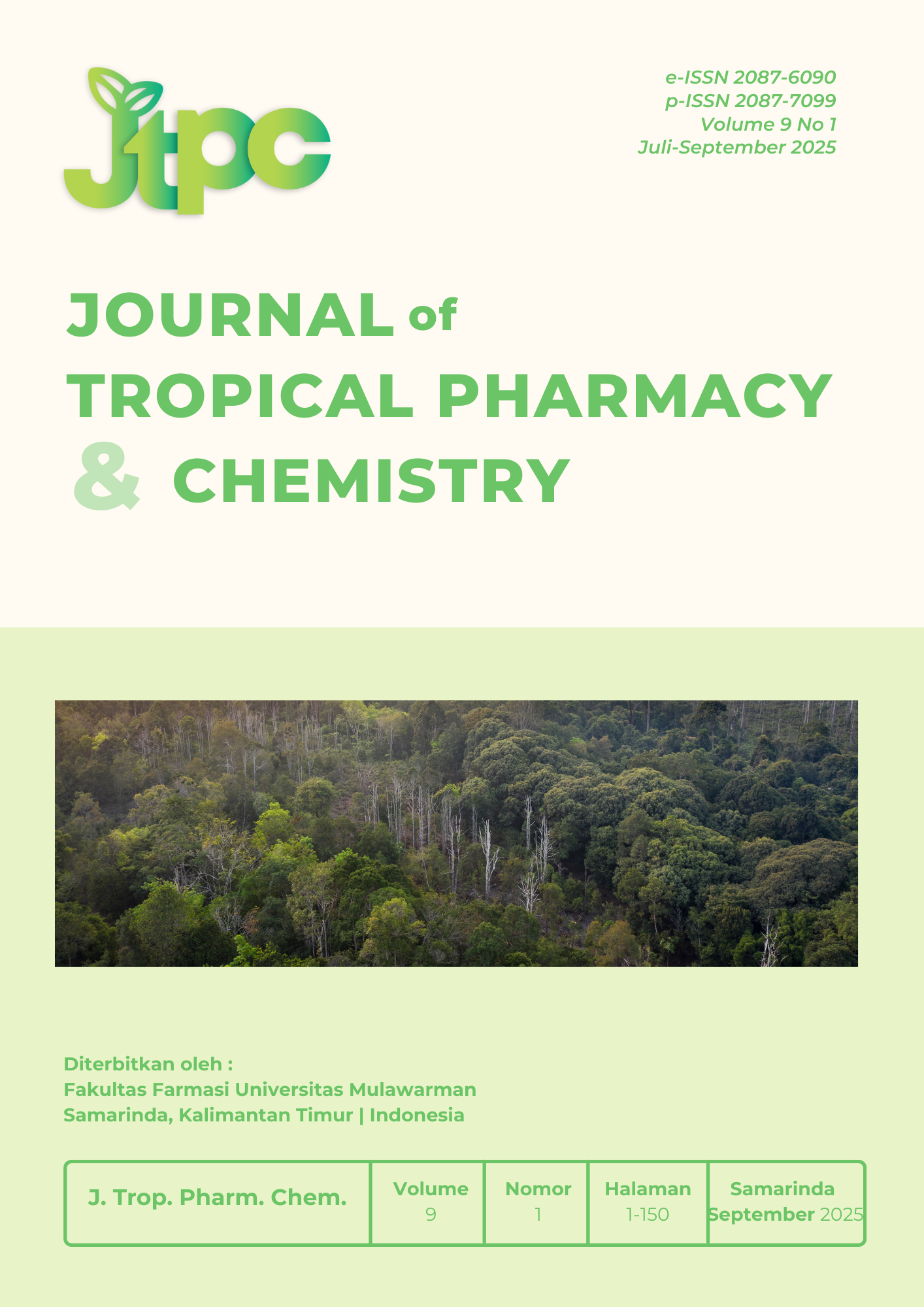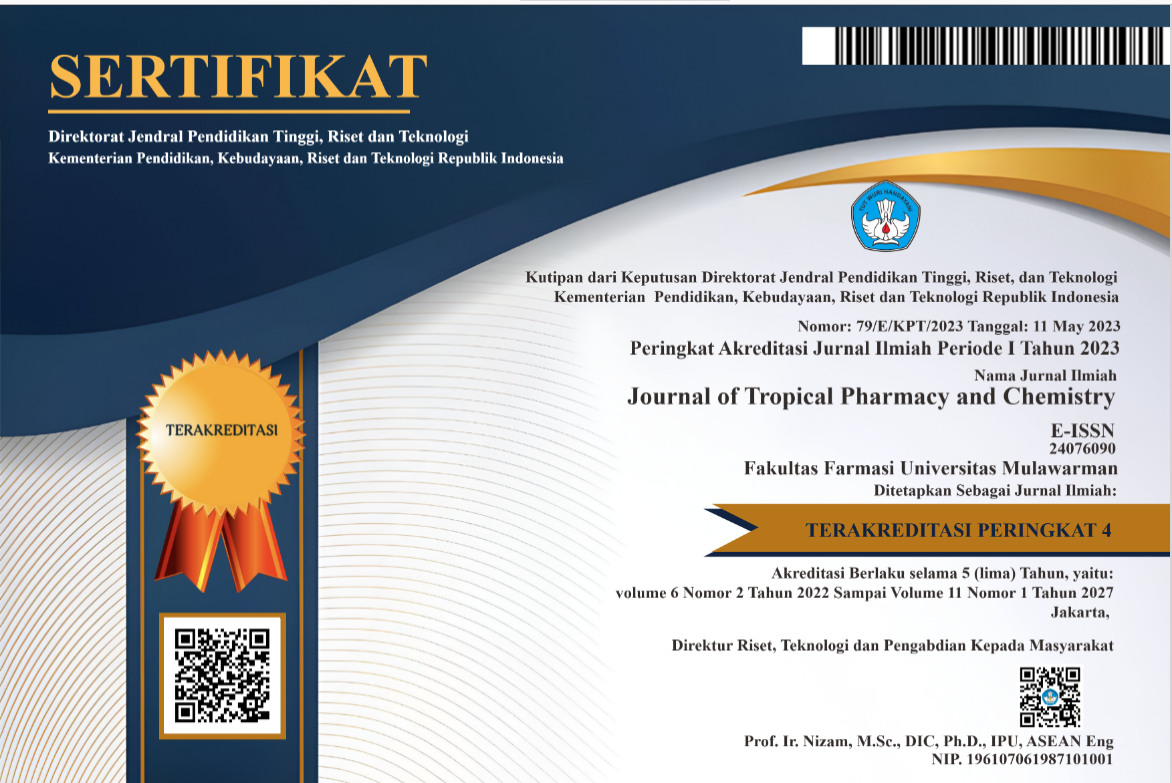Formulation And Evaluation Of Poly Herbal Nutraceutical Gummies For Diabetes
DOI:
https://doi.org/10.30872/jtpc.v9i1.294Keywords:
neutraceutical, gummies, diabetisAbstract
In this study due to the Changes in human lifestyle can have a profound impact on health, leading to a range of disorders. Poor diet, insufficient exercise, smoking, and excessive drinking are associated with chronic illnesses such as heart disease, diabetes, and some types of cancer. Nutraceuticals, which blend nutrition with pharmaceuticals, are foods or food components that are vital in altering and sustaining normal physiological functions crucial for human health. The growth of the global nutraceutical market is primarily driven by current demographic and health trends. Nutraceuticals sourced from both plants and animals present promising opportunities for the food industry to develop innovative food products in the future. In this study, we created nutraceutical gummies designed to address diabetes. These gummies were crafted using four plants known for their antidiabetic effects: panner Doda, star fruit, noni fruit, and the insulin plant.
Downloads
References
[1] D. A. Anggorowati, G. Priandini, and Thufail, “Potensi Daun Alpukat Sebagai Minuman Herbal yang Kaya Antioksidan,” Ind. Inov., vol. 6, no. 1, pp. 1–7, 2016, [Online]. Available: https://ejournal.itn.ac.id/index.php/industri/article/view/912
[2] H. Faisal, Hanafis Sastra, M. Andry, M. Sari, A. Chan, and M. A. Nasution, “Formulasi sediaan pasta gigi ekstrak etanol buah takokak (Solanum torvum Sw.) dan tulang ikan tuna sirip kuning (Thunnus albacares) terhadap bakteri Streptococcus viridans dan bakteri Escherichia coli,” J. Pharm. Sci., vol. 6, no. 3, pp. 1322–1338, 2023, doi: 10.36490/journal-jps.com.v6i3.218.
[3] H. R. Dewoto, “Pengembangan Obat Tradisional Indonesia Menjadi Fitofarmaka*.”
[4] Depkes RI, Farmakope Indonesia edisi IV. 1995.
[5] A. O. Putri, M. C. Hati, N. P. Ishanti, and H. S. Ilham, “Identifikasi Senyawa Flavonoid pada Beberapa Jenis Tanaman dengan Kromatografi Lapis Tipis: Literature Review,” PHARMADEMICA J. Kefarmasian dan Gizi, vol. 3, no. 2, pp. 45–54, 2024, doi: 10.54445/pharmademica.v3i2.40.
[6] A. N. Gangurde, “Optimisation of Kombucha fermentation,” pp. 1–289, 2022, [Online]. Available: http://hdl.handle.net/10179/17557
[7] F. Gaggìa et al., “Kombucha beverage from green, black and rooibos teas: A comparative study looking at microbiology, chemistry and antioxidant activity,” Nutrients, vol. 11, no. 1, pp. 1–22, 2019, doi: 10.3390/nu11010001.
[8] A. N. Antarti and R. Lisnasari, “Uji Aktivitas Antioksidan Ektrak Ethanol Daun Family Solanum Menggunakan Metode Reduksi Radikal Bebas DPPH,” JPSCR J. Pharm. Sci. Clin. Res., vol. 3, no. 2, p. 62, 2018, doi: 10.20961/jpscr.v3i2.15378.
[9] S. De Montijo-Prieto et al., “Impact of Lactic Acid Bacteria Fermentation on Phenolic Compounds and Antioxidant Activity of Avocado Leaf Extracts,” Antioxidants, vol. 12, no. 2, pp. 1–17, 2023, doi: 10.3390/antiox12020298.
[10] H. Hariadi et al., “Growth Inhibition Test of Gram and Negative Bacteria in Pharmaceutical Biotechnology Products in the Form of Hand Sanitizer Formulations Based Fermented Telang Flower Kombucha,” J. Biol. Trop., vol. 23, no. 3, pp. 316–325, 2023, doi: 10.29303/jbt.v23i3.5219.
[11] M. L. Irakoze, E. N. Wafula, and E. E. Owaga, “Effect of Lactic Acid Fermentation on Phytochemical Content, Antioxidant Capacity, Sensory Acceptability and Microbial Safety of African Black Nightshade and African Spider Plant Vegetables,” Bacteria, vol. 2, no. 1, pp. 48–59, 2023, doi: 10.3390/bacteria2010004.
[12] İ . Gulcin and S. H. Alwasel, “DPPH Radical Scavenging Assay,” Processes, vol. 11, no. 8, 2023, doi: 10.3390/pr11082248.
[13] R. Wołosiak et al., “Verification of the conditions for determination of antioxidant activity by abts and dpph assays—a practical approach,” Molecules, vol. 27, no. 1, 2022, doi: 10.3390/molecules27010050.
[14] M. Andry, F. Shufyani, M. A. Nasution, M. F. Fadillah, I. J. Tambunan, and F. Rezaldi, “Skrining Fitokimia Dan Analisis Kadar Kafein Pada Kopi Bubuk Jenis Arabika Di Kota Takengon Menggunakan Spektrofotometri Ultraviolet,” J. Pharm. Sci., vol. 6, no. 3, pp. 998–1006, 2023, doi: 10.36490/journal-jps.com.v6i3.176.
[15] A. D. Do, L. B. X. Nguyen, D. Q. Pham, T. T. Le, M. Leya, and T. Phan Van, “Kombucha tea derived from papaya (Carica papaya L.) as a potential functional food: physicochemical parameters, biological activities, and sensory evaluation,” Int. J. Food Sci. Technol., vol. 59, no. 10, pp. 7786–7794, 2024, doi: 10.1111/ijfs.16994.
[16] H. C. Kuo et al., “Enhanced antioxidant activity of Chenopodium formosanum Koidz. By lactic acid bacteria: Optimization of fermentation conditions,” PLoS One, vol. 16, no. 5 May, pp. 1–14, 2021, doi: 10.1371/journal.pone.0249250.
[17] A. J. de Miranda, R. A. de Souza, F. A. R. Cardoso, M. S. V. P. Oviedo, M. R. F. G. Perdoncini, and E. S. Rigobello, “Physical-chemical analyzes and sensorial evaluation of vinegar developed from kombucha (Medusomyces gisevii),” 2023, [Online]. Available: https://www.researchsquare.com/article/rs-3521812/v1
[18] N. Nurfitriyana, H. Harmita, and I. Iskandarsyah, “In vitro study of a transfersomal gel preparation containing lynestrenol as a transdermal drug delivery system,” Int. J. Appl. Pharm., vol. 12, no. Special Issue 1, pp. 242–244, 2020, doi: 10.22159/ijap.2020.v12s1.FF052.
[19] S. Suffys, D. Goffin, G. Richard, A. Francis, E. Haubruge, and M. L. Fauconnier, “Unveiling the Aromas and Sensory Evaluation of Hakko Sobacha: A New Functional Non-Dairy Probiotic Fermented Drink,” Molecules, vol. 28, no. 16, 2023, doi: 10.3390/molecules28166084.
[20] T. Pribadi et al., “Organoleptic Evaluation and Consumer Preferences for Singkil Tea and Kombucha Products (Premna corymbose Rottl. Et Willd),” J. Pembelajaran Dan Biol. Nukl., vol. 11, no. 2, pp. 594–610, 2025, [Online]. Available: https://doi.org/10.36987/jpbn.v11i2.7120
[21] S. Lestari, A. Husni, N. Nurjanah, and M. Firdaus, “Chemical Characteristic, Antioxidant Activity, and Consumer Acceptance Level of Kombucha from Sargassum cristaefolium Seaweed Tea,” J. Multidiscip. Appl. Nat. Sci., vol. 5, no. 3, pp. 949–968, 2025, doi: 10.47352/jmans.2774-3047.293.
[22] Novadyanti, “Uji Aktivitas Antiinflamasi Dan Antipiretik Ekstrak Etanol Daun Petai ( Parkia speciosa Hassk ) Pada Tikus Putih Jantan,” Naskah Publ., 2015.
[23] S. Malik, K. Muhammad, and Y. Waheed, “Nanotechnology: A Revolution in Modern Industry,” Jan. 01, 2023, MDPI. doi: 10.3390/molecules28020661.
[24] A. Nm et al., “Phytochemicals of Kombucha Extracts ( Black and Green Tea ) as Potential Therapeutic Agents Against Human Trypanosomiasis and Inflammation,” vol. 12, no. 3, pp. 1–10, 2025.
[25] M. M. Awaad, E. A. M. Mahmoud, E. M. Khalil, and E. A. Hanafy, “Biochemical assessment of Persea americana leaves extracts: Antioxidant, Antimicrobial and Cytotoxic effects,” Egypt. J. Chem., vol. 66, no. 5, pp. 169–179, 2023, doi: 10.21608/EJCHEM.2022.154431.6673.
Downloads
Published
Issue
Section
License
Copyright (c) 2025 siva sankara vara prasad inakoti, vijay kumar kola (Author)

This work is licensed under a Creative Commons Attribution-NonCommercial 4.0 International License.




